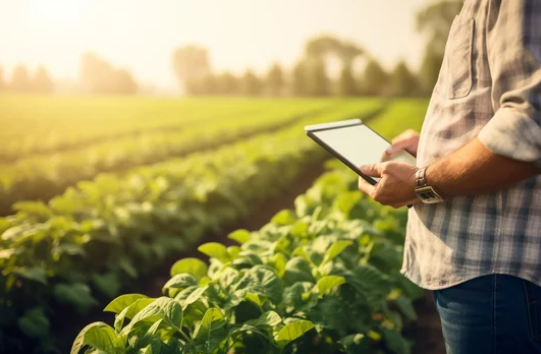
Articles & Insights
Revolutionising farming with agritech

Nico Groenewald, former head of Agribusiness at Standard Bank, conveyed a strong message at the TLU SA congress in September this year: “Don’t let poor technological decisions impede financial decisions.” With over 30 years’ experience in agricultural financing, Groenewald has witnessed the rise and fall of several primary agricultural businesses based on their decisions pertaining to technology.
Since humanity transitioned from hunter-gatherer societies to formalised agriculture, four agricultural revolutions have propelled the world forward. The first was the Neolithic Revolution around 12 000 years ago when the first human settlements figured out how to cultivate crops. The second was in the eighteenth century, introducing machinery to aid in planting and harvesting.
“The Green Revolution followed during the 1960s, marked by the introduction of synthetic fertiliser, genetic improvements, and a rise in agrochemicals.” The Digital Revolution began in the 1980s, bringing with it advancements such as the Internet and artificial intelligence. As this revolution continues, some believe that regenerative agriculture will be the next big agricultural revolution. “Opinion leaders regard technological advancements as the answer to agriculture’s challenges.”
Waste not, want not
Groenewald stated that while the saying “success breeds success” holds true, agriculture’s success story has also created new challenges. “The application of technology has led directly to a significant global population explosion.”
When agriculture started thousands of years ago, there were only 4,5 million people on the planet. This number has accelerated significantly over the past 200 years. In 2024 the United Nations (UN) estimated that there were 8,2 billion people on Earth, and this figure could jump to 9,7 billion by 2050.
This increase in production and population has led to a corresponding rise in greenhouse gas emissions (GHGs). Groenewald noted that food production contributes around 23% of these GHGs, encompassing the entire value chain from farm to fork.
“In addition, some literature argues that agriculture uses up to 90% of the world’s fresh water.” With this in mind, addressing food waste, which comes at a significant environmental cost, is crucial. The World Wildlife Fund or WWF, in collaboration with multinational food giant, Tesco, has released a report titled Driven to waste: Global food loss on farms, revealing that globally an estimated 2,5 billion tonnes of food go uneaten every year. “This comes to 40% of all food grown! Tackling this problem alone would be an improvement towards lowering GHG emissions,” Groenewald pointed out.
To put this into perspective, he referred to the fact that while South Africa’s current crop estimate for the 2024/25 maize season stands at just over 17 million tonnes for white and yellow maize, China’s annual maize wastage stood at 35 million tonnes per year. This is where technology could play a major role in improving humans’ wastage patterns. To find innovative technological solutions, active engagement from younger people is important.
Click here By Susan Marais, Plaas Media for the Agbiz Grain Quarterly November 2024 issue.
